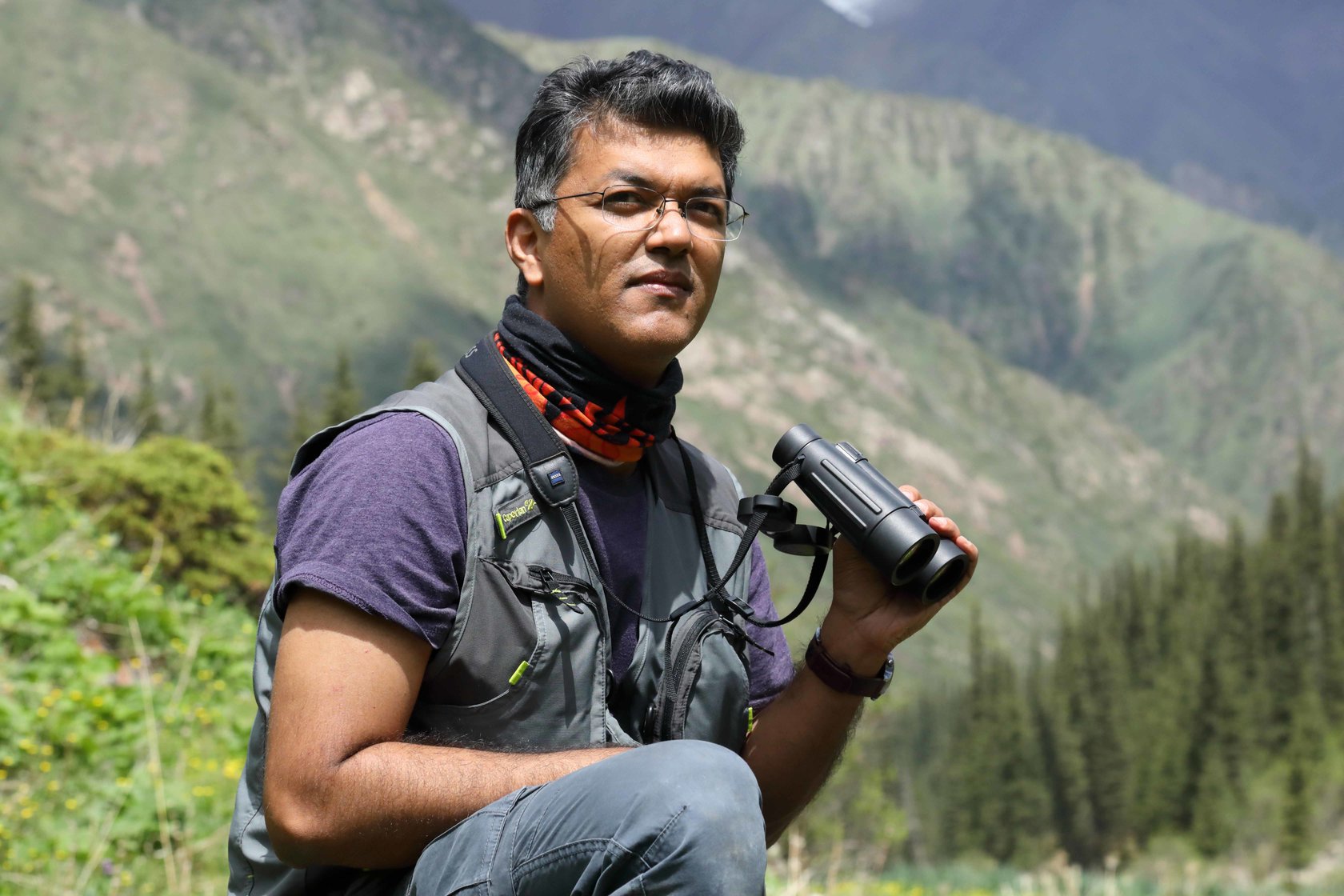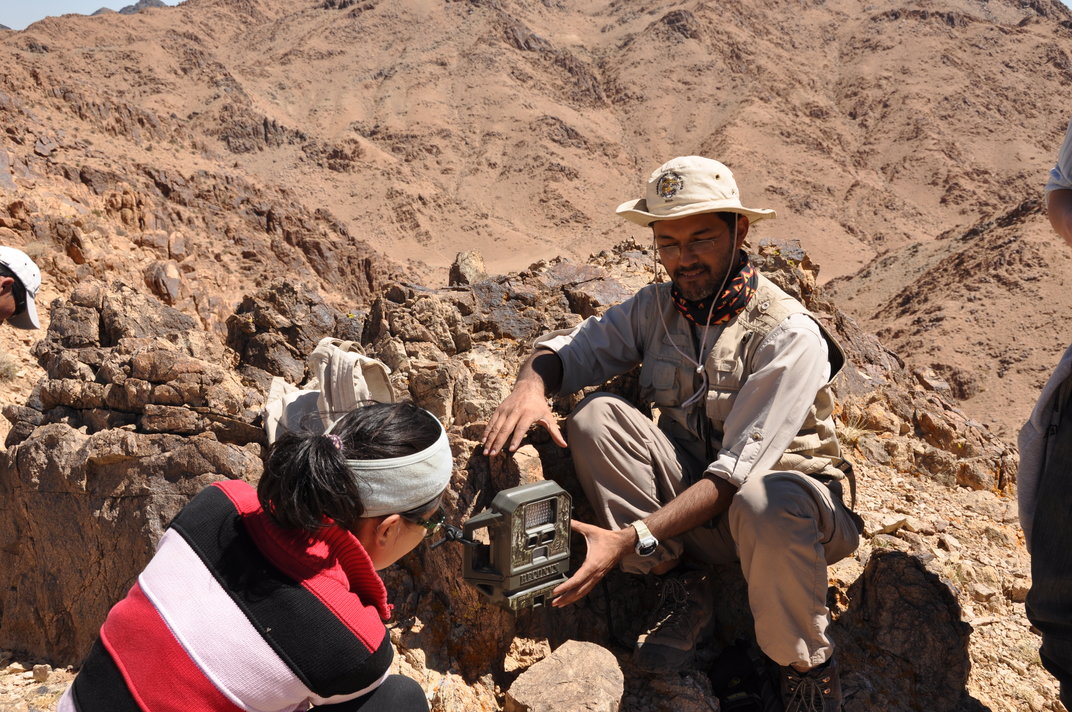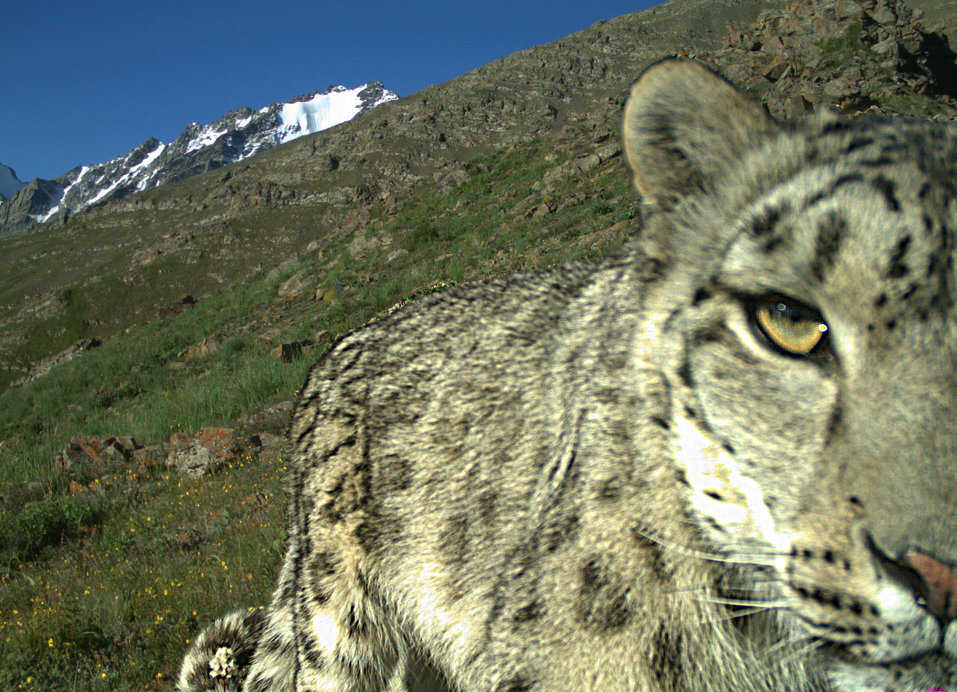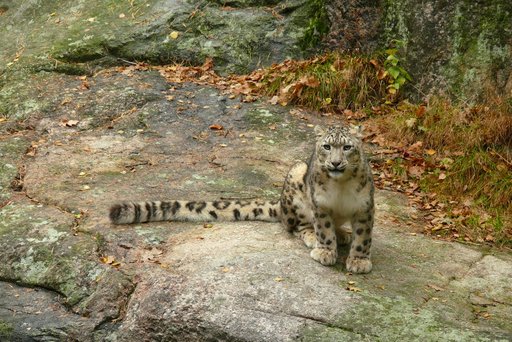
SCB held a Q & A with Senior Regional Ecologist at the Snow Leopard Trust and International Coordinator of the Global Snow Leopard and Ecosystems Protection Program (GSLEP), Koustubh Sharma, to learn more about his career path, what fuels his passion for working on snow leopard conservation, and more.
Tell us a bit about yourself.
I have been involved in active research and conservation for 19 years. My academic interests lie in population ecology, conservation biology, and ecological modeling.
I obtained a PhD in Wildlife Zoology from the University of Mumbai in 2006 after pursuing my Masters in Physics in 2001. I conducted the first detailed study of the rare Four-horned antelope while working with Bombay Natural History Society in Central India. I have so far authored nearly 25 scientific publications and presented my work in nearly the same number of international conferences.
When did you know that you wanted to work in conservation and what fuels your passion for working on snow leopard conservation?
I owe my interest in wildlife conservation to a bunch of forest officers from Central India who set up an organization to educate school children of the city of Bhopal way back in 1993. Following several interactions, they organized a nature camp where some of us got to spend 5 full days in the wilderness of Churna Nature Reserve within Satpura Tiger Reserve, one of India’s most spectacular tiger habitats. This is when I was introduced to wilderness up close. This is when I found my calling. I feel there is a lot that technology has to offer to improve our ability to monitor, conserve and protect wildlife. The challenge posed by snow leopards and other elusive species, and possible use of technology, mathematics and statistics to support natural history is what I think drives my passion for working on snow leopard conservation.

How did you end up where you are now? Was your career path clear, or did unforeseen opportunities come about at the right times?
I was fortunate to have had several mentors right from the beginning, and each of them played an important role in shaping my career at various stages. I don’t think it was clear until as late as 2002, how will I be able to do what I wanted to do, but I knew for sure that I wanted to follow my passion of working in the field of wildlife conservation.
After returning from the nature camp in Satpura Tiger Reserve, I started birdwatching and making bird checklists in the city of Bhopal where I was growing up. Some amazingly patient and supportive people such as Mr. Manoj Misra and Mr. Giridhar Kinhal were pivotal in nurturing my interests. Later, while doing my Masters in Physics, I ended up using my programming skills to develop a simple software to identify birds. Following that work, I got introduced to Dr. Asad Rahmani who showed faith in my ability to grow into a field biologist despite my background in Physics. I joined Bombay Natural History Society where I got the opportunity to improve my understanding of wildlife biology and natural history. I spent 5 years in Panna Tiger Reserve studying the four-horned antelope and assisting Dr. Raghu Chundawat on his study of tigers.
From the opportunity to develop a software to identify birds while doing my Masters in Physics in 2002, to getting the opportunity to study the four-horned antelope for a PhD, then being able to join the Snow Leopard Trust as an ecologist, and now coordinating a global consortium of ecologists, governments and multilateral organizations, it has been a mixed bag of opportunities, great mentors and a lot of perseverance that has allowed me to be where I am today.
What are you currently working on (professionally?)
I work with the Snow Leopard Trust, Seattle, USA as a Senior Regional Ecologist since 2007. Since 2014, I have taken additional charge as the International Coordinator of the Global Snow Leopard and Ecosystems Protection Program (GSLEP), a unique alliance of governments of 12 snow leopard range countries, international financial institutions and conservationists. My primary roles include coordinating the inter-governmental alliance, and assisting with field research, data analysis, community-based conservation programs and training and capacity building across several countries.

Credit: SLT/SLF/SAEPF, Kyrgyzstan
What does a typical work day look like for you?
One of the best parts about working in the field of conservation is that no two days of your work are ever the same! Wildlife conservation is a lot about spending time in the wilderness, but it is also a lot about spending hours in front of your computer, negotiating with policy-makers, helping a local community member’s family or a field ranger with her/his daily chores, and translating your work to reach out to a wide spectrum of audience in the public. From days where I used to spend up to 40-50% of my time in a year in the field; I unfortunately get to spend less time in the field now; but it gets compensated by the more time I get to interact with our various field teams in helping them plan, implement, analyze, report and present research and conservation activities; and coordinating activities of the Global Snow Leopard and Ecosystem Protection Program.
Describe what your perfect weekend would look like.
We have a daughter who is 5 years old. I have picked up a new hobby recently, which is that of making animals and toys from balloons! It is challenging (balloons burst if you don’t handle them well ), entertaining (what can be more fun than balloons), and educating (fun way to teach about stuff).

Credit: Koustubh Sharma
What’s your favorite thing about being on the Asia Section board?
The SCB Asia Board is a powerful group of highly accomplished conservationists. To get to be on the same panel with stalwarts from various conservation streams is truly an honor and at the same time a learning opportunity. I love the opportunity to get to interact with the board members and help develop plans to engage conservationists from the lesser engaged regions of Asia. It gives a sense of accomplishment when you manage to facilitate a bunch of young conservationists or representatives from an under-represented country or group of society find an opportunity to share their work with the global community.